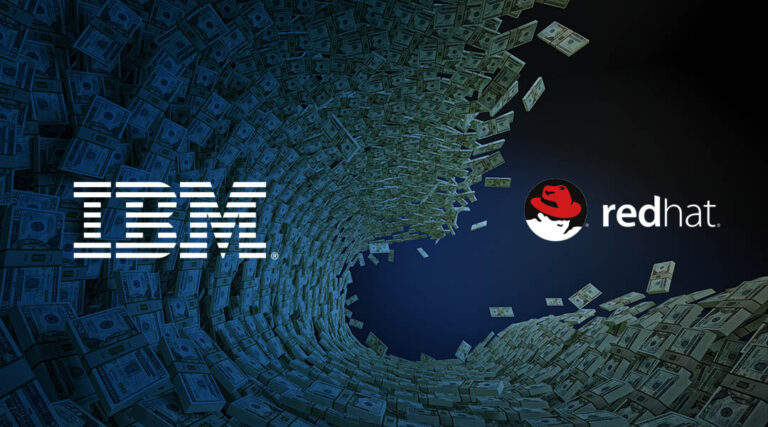
IBM has splashed out $34bn to take over Red Hat, in a deal with massive implications for software development and the cloud and which is already being seen as Big Blue’s last chance to remain relevant.
The deal – the third biggest tech buy ever – brings Red Hat’s product range under the IBM umbrella, from Red Hat Enterprise Linux and Openstack, OpenShift, Red Hat JBoss, its Cloud Suite, Gluster and Ceph Storage platforms, and The Ansible automation platform.
IBM’s CEO Ginni Rometty claimed the buy “changes everything about the cloud” and will make Big Blue “the world’s number one hybrid cloud provider. She said 80 per cent of business workloads had yet to move to the cloud, largely because of the “proprietary nature of today’s cloud market”.
In the statement announcing the deal, the companies said they will “help clients create cloud-native business applications faster, drive greater portability and security of data and applications across multiple public and private clouds, all with consistent cloud management. In doing so, they will draw on their shared leadership in key technologies, such as Linux, containers, Kubernetes, multi-cloud management, and cloud management and automation.”
The announcement of the deal – on a Sunday – caught the commentarati on the hop. But Sacha Labourey, Cloudbees CEO and a JBoss veteran, was quick to post a detailed commentary of the deal, describing it as an “all or nothing bet” for IBM.
“Given IBM’s lag on the cloud market, spending $34bn on Red Hat can make a lot of sense IF IBM is able to leverage this asset to increase their cloud market share to become one of the top three cloud vendors,” he wrote. “This is IBM’s last chance to matter on that market and if they don’t, they’ll slowly become a big but less relevant player.”
That’s a big if. As our friends at the Register have noted, quite apart from the usual difficulties integrating acquired people and tech, IBM’s culture has allegedly taken a rather harsher turn of late as it attempts to turn itself into a hybrid cloud player something that might grate with staff at the more freewheeling Red Hat. Plus we were under the impression it was the AI/analytics space that was the future for IBM, not the hybrid cloud.
As for developers, they are of course able to vote with their feet. However, while Microsoft’s recent gobble of GitHub purportedly led to an exodus to the likes of GitHub and BitBucket, shifting an entire enterprise infrastructure is a very different proposition.
In the statement announcing the deal, the companies said that between them, they had contributed more than any other organization to the open source community.
IBM would remain “committed to Red Hat’s open governance, open source contributions, participation in the open source community and development model, and fostering its widespread develop ecosystem.”
Red Hat will become part of IBM’s hybrid cloud business, and will be lead by CEO Jim Whitethurst and Red Hat’s current management team.
Labourey added that he’d predicted Red Hat would be acquired in 2018, but his money had been on Google, as the search giant needed a serious enterprise play to help drive its platform into the corporate world. Presumably, that gap still remains to be filled.
